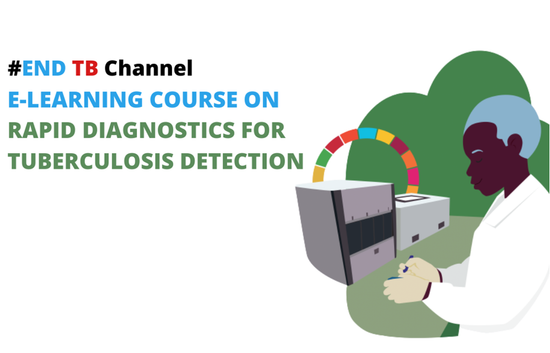
Ensuring universal access to TB care relies on the rapid diagnosis of TB, detection of drug resistance, and on the timely initiation of an effective treatment regimen. These require access to rapid and accurate tests, including drug susceptibility testing for all people with TB.
This course will provide you with the knowledge and skills needed to implement WHO-recommended TB tests and algorithms. It includes the latest recommendations for novel tests for TB diagnosis and detection of drug resistance, as well as the most recent WHO policy guidance for the use of those tests. The course also describes the processes and steps for implementing a new diagnostic test for routine use within the TB diagnostic network.
Язык: English
Advanced (Avancé), Tuberculosis
Информация о курсе
This course is also available in the following languages:
Overview: This e-learning course has been developed by WHO. It is a comprehensive, self-paced, online course that follows the content of the WHO operational handbook on tuberculosis: Module 3: Diagnosis – rapid diagnostics for tuberculosis detection - 2021 update.
Course duration: 4 to 5 hours
Certificates: Participants with an 80% score or more on the final assessment can download a Record of Achievement. Participants who receive a Record of Achievement can also download an Open Badge for this course. Click here to learn how.
© World Health Organization 2021. All rights reserved. This e-learning training was developed by the World Health Organization (WHO). It is intended to be used as a self-learning course on WHO recommended diagnostics for tuberculosis detection. All reasonable precautions have been taken by WHO to verify the information contained in this e-learning training. However, the e-learning training is being distributed without warranty of any kind, either expressed or implied. The responsibility for the interpretation and use of the e-learning training lies with the reader. In no event shall WHO be liable for damages arising from its use. The designations employed and the presentation of the material in this publication do not imply the expression of any opinion whatsoever on the part of WHO concerning the legal status of any country, territory, city or area or of its authorities, or concerning the delimitation of its frontiers or boundaries. Dotted and dashed lines on maps represent approximate border lines for which there may not yet be full agreement. The mention of specific companies or of certain manufacturers’ products does not imply that they are endorsed or recommended by the World Health Organization in preference to others of a similar nature that are not mentioned. Errors and omissions excepted, the names of proprietary products are distinguished by initial capital letters
Что вы узнаете
- Explain the rationale for delivering diagnostic services and illustrate the key components and organization of a TB diagnostic network in different settings;
- Describe the steps to be implemented when introducing a new diagnostic tool into an existing laboratory network;
- Describe the TB diagnostic algorithms that incorporate the most recent WHO recommendations for detecting TB and DR-TB and outline considerations needed to be made for the implementation these new algorithms;
- Explain indicators and targets and interpret results for performance monitoring of the laboratory network.
Для кого предназначен этот курс
- This e-learning course is intended for people who provide guidance to countries on implementing WHO recommendations on TB; for example, national programme managers, managers of laboratory services, technical staff at ministries of health, WHO staff, staff of technical agencies, consultants and anyone else serving a similar role in countries and major subnational units. It is assumed that you have experience in working on TB and are familiar with WHO TB guidelines.
Записаться на этот курс
Требования для получения сертификата
- Чтобы получить сертификат об окончании курса, участникам необходимо набрать не менее 80% от максимального количества баллов за все задания на оценку.
- Gain an Open Badge by completing the course.